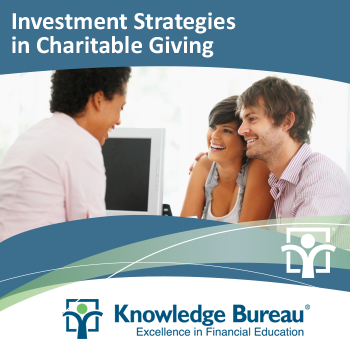Last updated: September 22 2015
Refugee Crisis: Talking Philanthropy with Your Clients

Canadians donated close to $11 billion to charity in 2010 according to Statistics Canada. Becoming more philanthropic and giving more to causes that are important to them, like the current refugee crisis or environmental issues, should be top of mind in year-end tax planning conversations, given the significant tax rewards associated with giving.
The Stats Canada study shows that there are many reasons why some people give more than others:
- level of awareness that a need exists
- feeling that one is able to make a difference
- relative cost of the donation as a proportion of disposable income
- strength of altruistic or pro-social values
- desire for social recognition
- psychological benefits related to giving
- being solicited and how this is done
- the act of giving could increase the psychological wellbeing, self-esteem or social status and reputation of donors themselves
Philanthropists are holding organizations accountable for the money they receive and want to see how charitable donations are managed. They are becoming far more demanding in wanting to maximize the impact of their donations.
Newly updated, Knowledge Bureau’s Investment Strategies in Charitable Giving course will assist financial advisors who want to ensure their clients’ gifts complement their overall wealth management strategy in a tax-effective manner, so they can give more to the right causes, if they so desire. Newly updated content to this course includes:
- Revisions to overview of charitable sector
- A look at how gift planning can help you build your business
- Inclusion of budget 2014/15 changes and Quebec gifting rules updates
- Budget changes to gifts of private company shares
- Using trusts for gift planning
- Changes to gifts of real estate
With this course, students will learn how to integrate charitable giving strategies into their annual financial reviews, use charitable giving as a way to build a business, and understand the advisor’s role in terms of a client’s charitable giving.
Other key benefits to taking the course include:
- Learn the different benefits for donors of different gift types and determine which are most appropriate for your clients.
- Understand the main components of charity law and taxes that can affect gift plans.
- Complete the case studies to test your new skills in defining gift plans for clients using charitable bequests, gifts of securities, gifts of life insurance, donor advised funds, real estate and other gifts.
- Familiarize yourself with the potential pitfalls of charitable giving including how to look out for those tax shelter schemes not acceptable to CRA.
- Discover how to find resources to assist you in the development of a client’s gift plan.
- Help clients to give in the most tax-efficient way
- Help clients to decide whether they want to give directly, start their own charity, give through an endowment, or use donor-advised funds,
- Determine which financial tools and techniques are appropriate for certain client situations
 |
DETAILED COURSE CONTENT:
Chapter 1: Why Philanthropy? – Understand the importance of philanthropy to your practice and learn how to discuss charity with clients.
Chapter 2: Charitable Gifts and Taxes – Understand the rules of gifts and taxes to ensure you can help clients maximize their gifts and minimize their taxes.
Chapter 3: Gift Plan Strategies – A gift, like a good financial plan, should be designed for the individual. Discover which gifts might be appropriate for different client circumstances.
Chapter 4: Charitable Bequests and Gifts of RRSPs/RRIFs – Understanding charitable bequests and the tax benefits to one’s estate for donations of capital property and life insurance.
Chapter 5: Gifts of Securities – Learn about the tax benefits of gifts of publicly listed securities and changes to gifts of private company shares.
Chapter 6: Gifts of Life Insurance – Understand different ways to gift life insurance and how designating a life policy to a charity can enhance your clients’ estate position.
Chapter 7: Ways to Give – Review the different structures for planned giving and learn how donor advised funds can help you build your business and your client relationships.
Chapter 8: Income Producing Gifts – Learn about charitable gift annuities and trusts.
Chapter 9: Other Gifts – There are many different types of gifts, each with specific tax treatment. Learn about gifts of property and changes to gifts of real estate.
Chapter 10: Integrating Philanthropy into Your Practice – Learn how to identify planned gift opportunities and what your responsibilities are in helping your clients with philanthropy.
The course was written and updated by Nicola Elkins, Chief Executive Officer and Founder of BenefAction Foundation, a national charitable public foundation that specializes in planned giving. She is also a member of the Knowledge Bureau faculty. To enrol, please call Knowledge Bureau at 1-866-953-4769 or visit www.knowledgebureau.com to enrol online.
